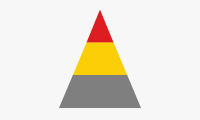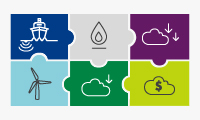Carbon capture and storage
Shell invests in carbon capture and storage projects, which use a combination of technologies to capture and store carbon dioxide deep underground, preventing its release into the atmosphere.
Highlights in 2017
- The Quest CCS project in Canada captured and safely stored more than 1 million tonnes of carbon dioxide in 2017.
- We entered a partnership to continue to develop carbon dioxide storage on Norway’s continental shelf.
- The OGCI's investment arm, OGCI Climate Investments, made its first investments in carbon capture utilisation and storage technology.
Carbon capture and storage (CCS) is expected to play a significant role in the global climate response, according to the International Energy Agency (IEA). CCS technology offers the opportunity to capture carbon dioxide (CO2) from large industrial facilities, such as steel, chemical and power plants.
Globally, there are 21 large-scale CCS projects in operation or under construction, with a combined capacity to capture around 40 million tonnes of CO2 each year. CCS will be essential for meeting the goal of limiting global warming to well below 2°C. According to the IEA, reaching this goal will require 6,000 million tonnes of CO2 to be stored by 2050, equivalent to about 100 times the global CCS capacity in place by the end of 2017.
Shell and CCS
We are operating the Quest CCS project (Shell interest 10%) in Alberta, Canada to capture and store CO2 from the Scotford Upgrader, a plant where bitumen is turned into synthetic crude oil. In less than two years and ahead of schedule, Quest has captured and safely stored more than 2 million tonnes of CO2. This represents around a third of the upgrader's direct GHG emissions. We developed a rigorous monitoring programme for Quest, agreed by the government and verified by a third party, to ensure the CO2 remains safely underground. This includes continuous pipeline monitoring and early-warning systems, groundwater sampling and 3D seismic surveying.
Carbon capture technology developed by Shell Cansolv, a subsidiary of Shell, is also used at the Boundary Dam power station in Saskatchewan, Canada. It is SaskPower’s largest coal-fired power station and a significant source of power for the region. Both sulphur dioxide and CO2 are captured from the power station. We continue to support SaskPower to improve the application of the technology. Around 2 million tonnes of CO2 have been captured and stored since the CCS facility started operating in 2014.
At Technology Centre Mongstad, Shell, together with the Norwegian government and energy companies Statoil and Total, will carry out further research and development to reduce the cost of CCS technology. In 2017, we reaffirmed our commitment to participate in continued testing at the centre until 2020.
In October 2017, Shell entered a partnership to continue to develop CO2 storage on the Norwegian continental shelf. The project is part of the Norwegian government’s efforts to develop full-scale CCS in the country.
Shell is also investing in the Gorgon CO2 injection project in Australia, which is operated by Chevron and will be the world’s largest CCS operation when completed. Gorgon CCS will separate and reinject between 3 to 4 million tonnes of CO2 each year. Over the life of the project, it is expected that around 100 million tonnes of CO2 will be captured and stored.
The Oil and Gas Climate Initiative (OGCI), comprised of 10 major oil and gas companies, including Shell, has made carbon capture, utilisation and storage technology one of its priorities. In 2017, OGCI’s investment arm Climate Investments made its first investments in technology to capture CO2 emissions and store them safely in the ground. This includes ways to reinject the CO2 captured from industrial processes, such as cement production.
How carbon capture and storage works
See what's involved in the process of capturing and storing carbon dioxide deep underground
 Sustainability at Shell
Sustainability at Shell
 Sustainable development goals
Sustainable development goals
 About our data
About our data
 Energy transition and climate change
Energy transition and climate change